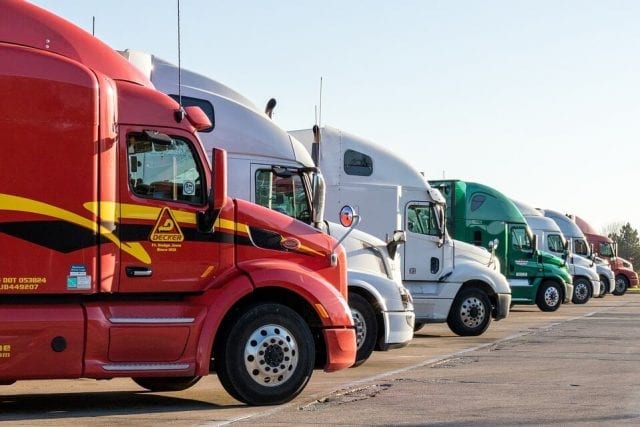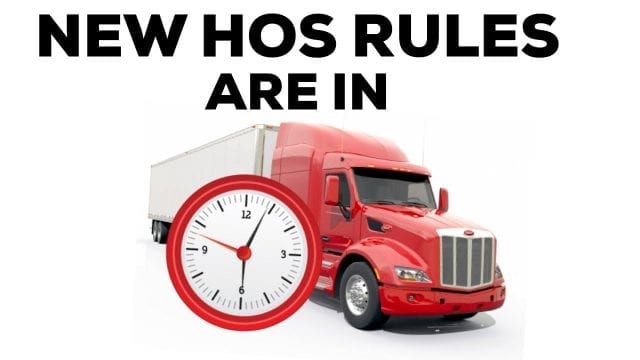
Most commercial truck crash fatalities are passenger vehicle occupants. That’s because most trucks, tractor-trailers, and semis weigh 30-times more than the average passenger vehicle. They’re also higher off the ground, which causes some cars to slide underneath and get stuck and/or dragged.
Due to the weight and size of commercial trucks, passenger vehicles have an automatic disadvantage in any collision. That disadvantage is reflected in the accident statistics. For instance, out of 4,136 truck accident related fatalities in 2018, 67% were occupants of a passenger vehicle.
What causes tractor-trailer accidents?

According to semi-truck accident lawyers from the Lichtenstein Law Group, tractor-trailer accidents are mainly caused by the following:
- A fatigued driver who hasn’t had a break in a long time
- Prescription drugs or over-the-counter drugs that should not be taken while driving
- Improperly maintained brakes and/or other equipment
- Traffic flow interruptions like congestion or other accidents
- Speeding and aggressive driving to reach the next stop quickly
- Being new to the roadways
- Road construction or maintenance
- Failure to stop at a stoplight or crosswalk
- Failure to look for/notice other vehicles
- Unsecured cargo that suddenly shifts or spills
While all of these factors contribute to accidents, fatigue accounts for 13% of all crashes involving large trucks. Fatigue is one of the easiest problems to prevent, but it requires drivers, employers, and federal law makers to come together. To reduce preventable trucking accidents, regulations must be created, willingly followed, and strictly enforced.
The trucking industry has responded by tightening regulations

In an attempt to prevent serious accidents caused by fatigued drivers, the trucking industry has implemented strict regulations at the federal and state level. For example, hours-of-service (HOS) regulations determine how many hours per day a driver can be on duty and behind the wheel.
It should be noted that due to the coronavirus pandemic, these regulations have been suspended at the federal level for the first time in history. The suspension only applies to drivers transporting necessary goods like food, medical supplies, masks, and hand sanitizer.
HOS regulations for commercial truck drivers

Under the HOS regulations, most commercial truck drivers (carrying property) can only be on-duty for 14 hours per day and may only drive for 11 hours per day. The last 10 hours in the day must be spent completely off-duty.
Drivers are limited to 60 hours of total driving time within 7 consecutive days, or 70 hours within 8 days.
Slightly stricter rules apply to truck drivers carrying passengers. These drivers are limited to 10 hours of driving per day and must have 8 consecutive hours off-duty.
Drivers are prohibited from performing any other kind of work (even non-driving work) while off-duty. If any work of any kind is performed, it will count as on-duty time. This includes work for another job or any kind of self-employment work.
Changes are coming to the way HOS compliance is logged

To meet the HOS regulations, many employers require truckers to keep logs of all breaks including sleeping logs to ensure they’re getting the required rest. However, manual logs are easily manipulated. Truckers can just keep driving and pencil in sleeping breaks to make it look like they’ve slept.
At the federal level, drivers aren’t required to keep a logbook, although employers are required to keep certain records for each driver. Most employers implement policies requiring drivers to keep a logbook to make these records easier and more accurate. However, the entire system is getting an overhaul.
Recently, The Guardian reported a major change to the way truckers are required to document their work day. As of December 16, 2019, all trucks driving on U.S. roads are required to have an electronic logging device (ELD) to ensure accurate tracking and sharing of duty status records. This bypasses the potential for manipulated logs. If a driver decides to skip a sleeping break, it will be recorded in a way that can’t be altered.
While keeping track of a driver’s daily activities makes it easy to enforce the HOS regulations, it’s also important for trucking companies to train employees properly and encourage following the rules. It’s no secret that truck drivers loathe the HOS and other regulations. However, the rules may not be perfect, but they are in place for everyone’s safety on the road.
The other important factor in keeping the roads safe is training. Surprisingly, truckers don’t receive thorough training, and many aren’t required to prove more than basic competence behind the wheel. Since truckers meet all kinds of road conditions and hazards while driving, it’s impossible to simulate every potential scenario during a BTW test. However, not all situations are covered during training.
New driver training requirements are coming

The commercial trucking industry will soon see a new rule called the Entry Level Driver Training rule. This rule was set to take effect on February 7, 2024, but has been delayed for two years. When in effect, the ELDT program will be the first formal required training coming from the federal level.
Established by the Federal Motor Carrier Safety Administration (FMCSA), this new rule establishes new minimum training standards for individuals applying for certain types of commercial driver licenses or upgrading their existing licenses. Drivers must demonstrate proficiency behind the wheel and through a written test.
Truck drivers have the most power to prevent accidents

Regulations, laws, and training will make a significant contribution to the safety of U.S. roadways. However, laws and regulations don’t work unless truck drivers choose to obey the rules. Training will only be as effective as drivers are willing to apply what they learn and get clarification around things they don’t understand.
It’s human nature to disregard rules that seem unfair, tedious, and inconvenient. In the trucking industry, disregarding safety rules can have dire consequences and sometimes the driver pays the price.
Some accidents can’t be prevented, but many can be prevented. However, preventing accidents takes more than strict laws and revamped company policies. To make the roads safe for everyone, drivers, trucking companies, and law makers must all work together to ensure policies are effective, enforceable, and most importantly – followed.





